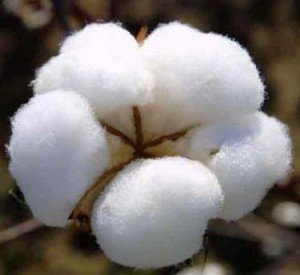Cotton is suddenly in the news. India’s primary cash crop , cotton’s production this year has been so high that it is enough to last for two years at the current rate of consumption. Moreover the possibility of a global meltdown has also led to a low demand in the export market thereby leading to falling prices in the cotton market.
In economics, it is often said that over production is a farmer’s curse as it leads to lower prices. The cotton farmers in India are facing exactly that. The main reason behind this production rise is that most of the farmers booked 100% profit last year due to higher prices and demand, and this made them feel the same can be achieved in this fiscal year.

The price of cotton has fallen to INR 4000 a quintal and there is a likelihood that prices can come down to the level of INR 3300 a quintal, the minimum support price for long staple cotton fixed by the government. In fact the cotton prices have already dropped to level of INR 3800 in Andhra Pradesh and is expected to fall further. Against this backdrop, at least fours states are putting pressure on the central government to raise the minimum support price. Maharshtra, Punjab, Haryana and Andhra Pradesh are the states that are leading this demand. In fact, Maharashtra has demanded the price to be raised to INR 4250 a quintal for cotton- this becomes even more critical as Maharashtra is soon going to polls and the issue is expected to become a pot boiler in the elections.
The prices of cotton have fallen from record levels of INR 7000 in the last week of March to current level. Moreover the production projected this year is 356 lakh bales against 325 lakh bales last year when farmers enjoyed the double advantages of higher prices and higher production.[1 bale is equal to 170 Kg]. Another interesting thing to note is that this price fall has occurred at a time when not even 10% of the total produce has reached the market,so there is little doubt that prices will fall further. So what are the economic implications of a possible rise in MSP ( Minimum Support Price) ?
According to CII, at the current level of prices, Indian manufacturers are going to lose INR 15 / kg of yarn manufactured, so there is little economic justification for raising the prices. Besides this, due to lower demand ,the government may have to step in to buy cotton from its own reserves- so raising the MSP will only worsen its own cause. This is even more significant as Indian growth has slowed down to 6.9% last quarter and there is a possibility of an economic slowdown. According to an estimate raising the price by even INR 300 a quintal, will eventually lead to draining the treasury of as much as INR 30,000 crores – a situation the finance ministry will try hard to avoid.
Interestingly, Gujarat, the largest producer of cotton has not asked for raising the price whereas Maharashtra is making all the noise. If we go by logic, Gujarat should be affected more. The real reason is quite different. The cotton fields in Gujarat are 50% irrigated as against 5% in Maharashtra – so while farmers in Vidarbha is facing the problem due to low yield per hectare, its counterpart Gujarat is making gain due to higher yield per hectare and exporting quietly to China.
The price of cotton issue could not possibly have come at a worse time than the UPA government- as it it comes at a time when it has been branded as anti-poor, anti-farmer due to its decision to allow FDI in retail and with pending elections in key states. The government is willing to have a package of INR 5000 crore for the textile sector this year to restructure corporate debt and ease working capital. However what remains to be seen is whether the centre can give out a clear signal of non-intervention unless prices fall below cost of production- in a democracy, that seems unlikely !
You might like reading:

Operational optimization at APMC Procurement
Abstract: Agri-business, as the present scenario is concerned follows decade old practices of procurement, packaging and dispatch. Still, all the jobs are done manually by labourer varying from filling of sacks with grains to dispatch of the sacks. Taking into consideration the acute shortage likely to be faced by this sector we need to come up with innovative and automatic […]

China’s Air Defence Identification Zone- Analysing the impact
China, is no stranger to controversies especially when it comes to stressing its new found status as a regional superpower. Its recent decision on November 23rd to declare a unilateral Air Defence Identification Zone (ADIZ) over the Japanese administered Senkaku (Diaoyu in China) islands, is another step in the same direction. The declaration of the zone has several implications […]






























